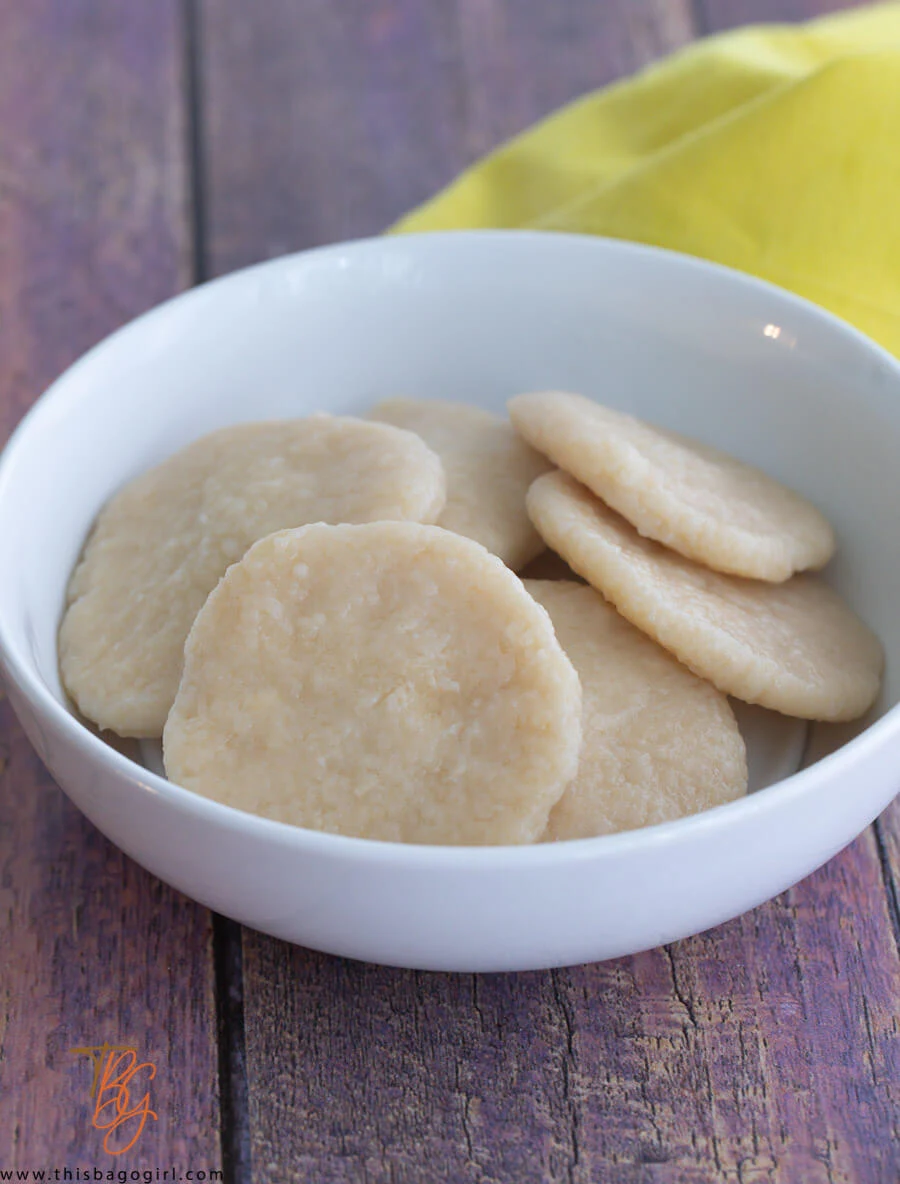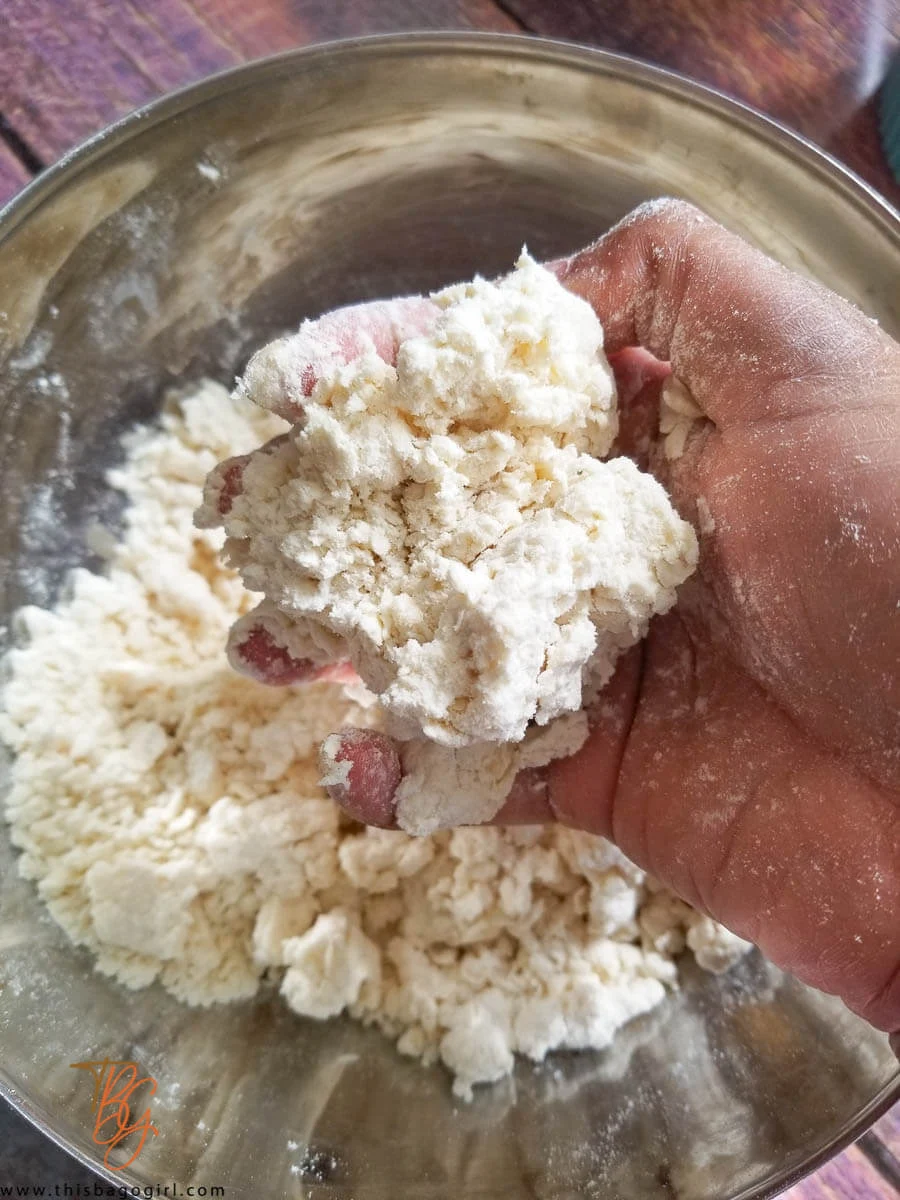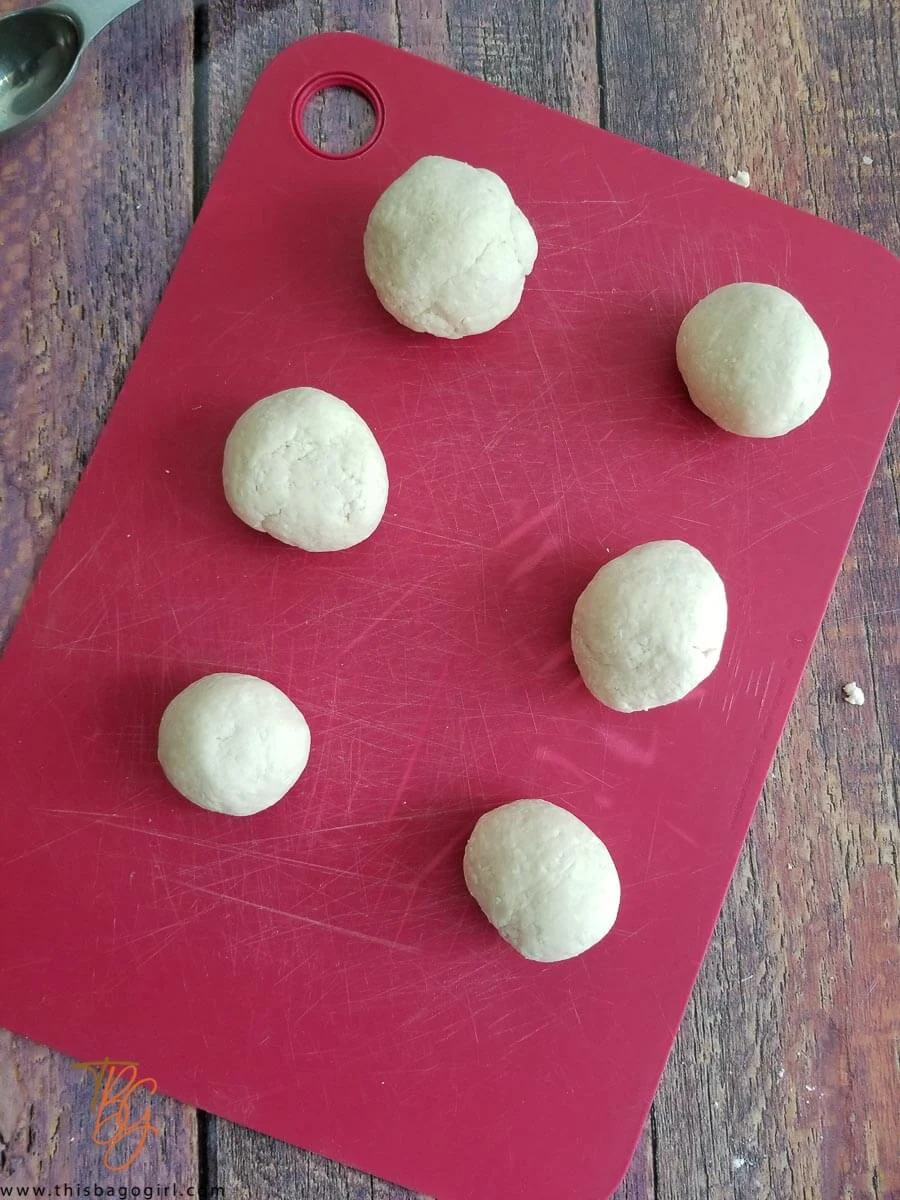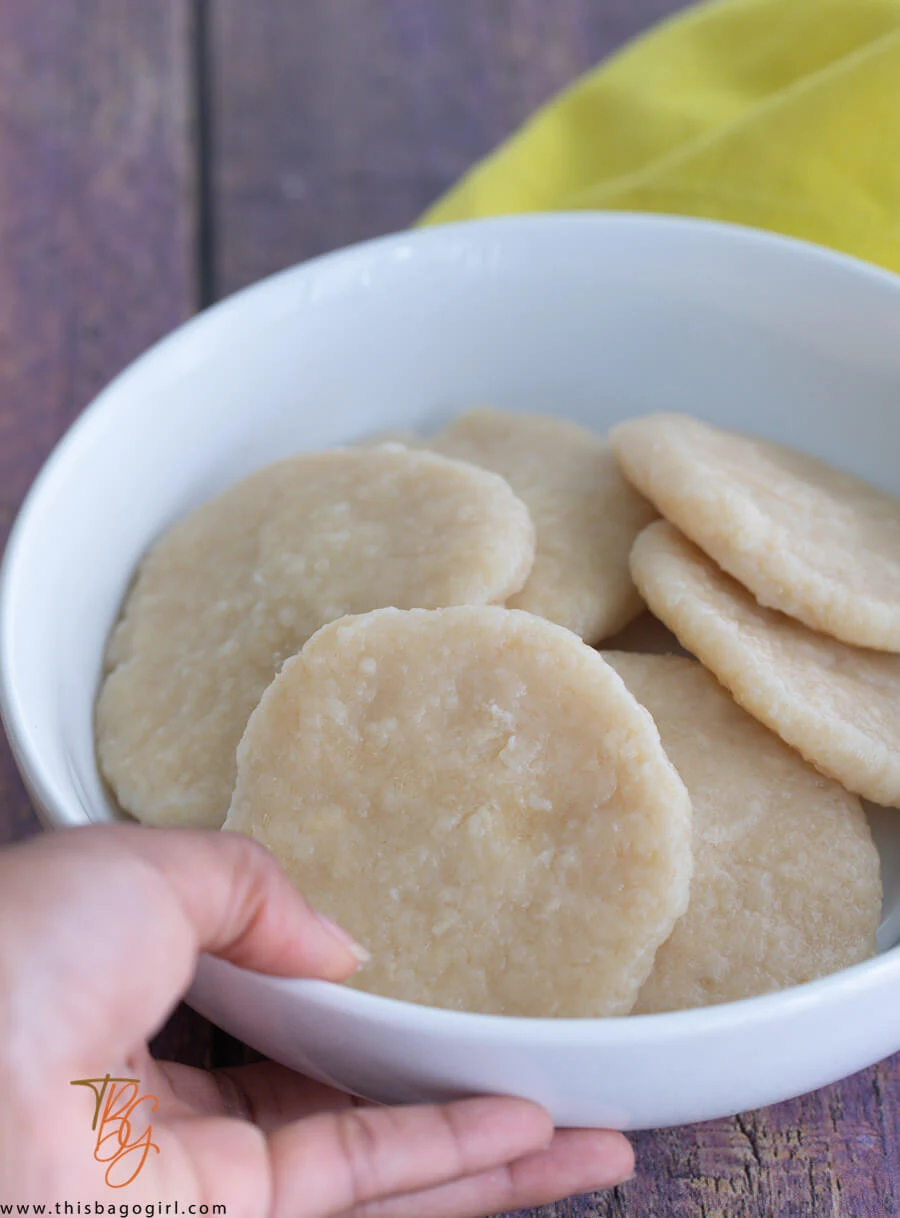An easy Caribbean recipe for boiled cassava dumplings
24.1.22
| Recipe by Renz
Make a filling dumpling variation in no time with these cassava dumplings, using
grated cassava. Boiled Caribbean dumplings are the easiest things to make in
Caribbean cooking and are great side options paired with some stew meat or used
in soups.
Dumplings are an integral part of my food culture. Especially in Tobago, it makes up a large part of the traditional Afro-Caribbean food we make. And are usually the steadfast companions of ground provisions.
We will find both food groups in soups and paired with stews of meat and fish. In fact, my top favorite dish of all time is stew chicken and dumplings.
They vary from shape to size, to type. It all depends on what it's being used for and what it's being eaten with.
Then we have a variety of dumpling "flavors". The most common base is plain flour dumplings. Then we have a variety of dumplings like pumpkin, coconut, cornmeal dumplings, wheat, and one of my other favorites, cassava.
Cassava root dumplings, to me, are a little sweet and that's what I like. The flavor of the actual cassava root stands out which makes it pair great with meats.
So I'm going to share with you a cassava dumplings recipe, Trini style - an easy recipe.
It's important that you choose a good piece of cassava, also called yucca (yuca root) to make your dumplings. Being one of our main ground provisions, it can be found at most Caribbean and Latin American supermarkets in the produce area. It is a waxy-looking root. The wax actually helps its preservation while traveling.
You want to choose one that is firm to touch and has no blemishes. Break off a piece of the root and see if there are any black specs, soft spots, or signs of discoloration. If you do see any, then it should be thrown out. You do not want to use any cassava that is decaying. Not only will it smell really bad it will also taste really bad.
If you cannot find fresh cassava, it is also sold peeled and cut in the freezer aisle in most stores, including Publix supermarkets.
I prefer fresh as I personally find it has more flavor. But frozen can be used. Frozen has the advantage that it gives you a higher chance that it is not rotting.
The skin of the cassava root is very thick, so you cannot use a potato peeler. A good sturdy sharp knife is what you need.
If you have a very long piece, cut it up into smaller manageable pieces. Then stand up each piece, and trim the skin off. Kind of like you would peel a pineapple.
Some people also like to make a deep spiral mark from one end to the other end, then "roll" the skin off.
We are trying to get all the brown off and get to the first layer of white.
The cassava dumpling ingredients are very much your pantry basics, especially if you are in a Caribbean home. Having ground provision sitting waiting to be used is normal.
You will need:
Once you have selected the cassava and peeled it, then it's time to grate. You can cut the cassava into quarters to make it easier to process.
Grating cassava is pretty easy but can be dangerous. I've just gone ahead and stuck to using my food processor.
If using a food processor, make sure you remove the core and discard it, then throw the rest into your processor. Process till fine. You may need to cut them into smaller pieces depending on your processor size.
If you are using a grater, take a large bowl, and then place the grater in it. Using the smallest side, grate the cassava pieces down. Remove the core when you get to it and discard it.
In a medium mixing bowl, mix the grated cassava with the other dry ingredients: flour, sugar, and salt. Then start adding cold water slowly.
Mix till combined into a pliable but firm dough. Not too soft and not too hard. Like with most dumplings, if it's too soft and sticky, add a little flour at a time to get it to a firmer consistency. If it's too stiff, add more water and keep working the dough.
We want it to be a little springy, not sticky dough.
In a large, heavy-bottomed pan, bring cups of water to boil with salt and oil on medium-high heat.
While the water is boiling, there are a few ways you can form your dough.
There are numerous ways to make dumplings. The shape depends on what you are going to use it for. Is this for soup or is this to be used as a side dish?
And the method of shaping them also varies.
To make as a side, for like crab and dumplings or to eat with some stew meat, we make them into discs.
There are three methods:
Method 1: Once mixed, you can separate the dough equally and make the dough into balls using your hand. Then you can flatten each ball out with your hand, applying pressure to the center and spreading it out. Or you can roll each ball with a rolling pin to the desired thickness.
Method 2: Once mixed, roll all the dough out on a floured surface with a rolling pin to your desired thickness, then using a drinking glass, cut out circles. Once discs are cut out, set them to the side then roll together any leftover dough and repeat until all dough is used up.
Method 3: If you wanted to use this dumpling for soup, we would make them in the shape of what we call spinners. These are long barrels of flour. You just pinch a piece of dough from the ball and roll in between your hands, making a log.
If it's for soup, I also make them in the shape of small dough balls. These sizes fit best into your bowl of soup.
Once that water is at a constant rolling boil, add the dumplings to the hot water carefully. Take a wooden spoon and give them a good stir.
Leave them to boil until they all float to the top. That should be about 10-15 minutes.
Once done boiling, I strain off the cassava water from the dumplings into a colander, discarding the excess water. Let them rest in the empty pot and continue to drain the liquid. You can add a little butter over the dumplings to keep them moist.
Some people actually like to leave their dumplings in the pot of cassava water once they are boiled until ready to use. That is another option.
You can for sure make cassava flour dumplings.
Easily substitute the cassava flour if you do not have any fresh cassava. The flavor will not be as intense though, I must add. I would do about a cup of cassava flour mixed with my regular flour.
There are two ways to store any leftovers you may have.
Once cooled, place them in an air-tight container and put them in the fridge. These will be good for up to three days.
Another way is to place them in the fridge in the water they were boiled in. I do not like this method personally. I feel like the dumplings are getting soggy.
To reheat, bring a pot of water to boil, then add dumplings to the water. Let them boil for about 8 minutes to warm up.
My dough is too soft - just add more flour, a little at a time until you get the consistency you would like. You do not need to add more fresh cassava.
My dough is too stiff - Add a little water at a time and mix in till you get that pliable consistency. I do about a tablespoon at a time.
I love, love these Caribbean boiled cassava dumplings with stews so then you can try them with oxtails or some stew chicken or stew saltfish.
Also great with some callaloo and steam fish.
Another amazing combination is saltfish rundown and some tomatoes steamed down.
Dumplings are an integral part of my food culture. Especially in Tobago, it makes up a large part of the traditional Afro-Caribbean food we make. And are usually the steadfast companions of ground provisions.
We will find both food groups in soups and paired with stews of meat and fish. In fact, my top favorite dish of all time is stew chicken and dumplings.
They vary from shape to size, to type. It all depends on what it's being used for and what it's being eaten with.
Then we have a variety of dumpling "flavors". The most common base is plain flour dumplings. Then we have a variety of dumplings like pumpkin, coconut, cornmeal dumplings, wheat, and one of my other favorites, cassava.
Cassava root dumplings, to me, are a little sweet and that's what I like. The flavor of the actual cassava root stands out which makes it pair great with meats.
So I'm going to share with you a cassava dumplings recipe, Trini style - an easy recipe.
How to pick a good cassava
It's important that you choose a good piece of cassava, also called yucca (yuca root) to make your dumplings. Being one of our main ground provisions, it can be found at most Caribbean and Latin American supermarkets in the produce area. It is a waxy-looking root. The wax actually helps its preservation while traveling.
You want to choose one that is firm to touch and has no blemishes. Break off a piece of the root and see if there are any black specs, soft spots, or signs of discoloration. If you do see any, then it should be thrown out. You do not want to use any cassava that is decaying. Not only will it smell really bad it will also taste really bad.
If you cannot find fresh cassava, it is also sold peeled and cut in the freezer aisle in most stores, including Publix supermarkets.
I prefer fresh as I personally find it has more flavor. But frozen can be used. Frozen has the advantage that it gives you a higher chance that it is not rotting.
Best practice to peel and grate cassava
The skin of the cassava root is very thick, so you cannot use a potato peeler. A good sturdy sharp knife is what you need.
If you have a very long piece, cut it up into smaller manageable pieces. Then stand up each piece, and trim the skin off. Kind of like you would peel a pineapple.
Some people also like to make a deep spiral mark from one end to the other end, then "roll" the skin off.
We are trying to get all the brown off and get to the first layer of white.
How to make cassava dumplings
The cassava dumpling ingredients are very much your pantry basics, especially if you are in a Caribbean home. Having ground provision sitting waiting to be used is normal.
You will need:
- Cassava/yucca - this can be fresh or frozen. I prefer to use fresh.
- All-purpose flour - this helps to bind the cassava together to make a smooth dough.
- Water
- Granulated sugar - helps to enhance the flavor of the cassava.
- Butter (optional)
- Salt
- Oil
Once you have selected the cassava and peeled it, then it's time to grate. You can cut the cassava into quarters to make it easier to process.
Grating cassava is pretty easy but can be dangerous. I've just gone ahead and stuck to using my food processor.
If using a food processor, make sure you remove the core and discard it, then throw the rest into your processor. Process till fine. You may need to cut them into smaller pieces depending on your processor size.
If you are using a grater, take a large bowl, and then place the grater in it. Using the smallest side, grate the cassava pieces down. Remove the core when you get to it and discard it.
In a medium mixing bowl, mix the grated cassava with the other dry ingredients: flour, sugar, and salt. Then start adding cold water slowly.
Mix till combined into a pliable but firm dough. Not too soft and not too hard. Like with most dumplings, if it's too soft and sticky, add a little flour at a time to get it to a firmer consistency. If it's too stiff, add more water and keep working the dough.
We want it to be a little springy, not sticky dough.
In a large, heavy-bottomed pan, bring cups of water to boil with salt and oil on medium-high heat.
While the water is boiling, there are a few ways you can form your dough.
How to form dumplings
There are numerous ways to make dumplings. The shape depends on what you are going to use it for. Is this for soup or is this to be used as a side dish?
And the method of shaping them also varies.
To make as a side, for like crab and dumplings or to eat with some stew meat, we make them into discs.
There are three methods:
Method 1: Once mixed, you can separate the dough equally and make the dough into balls using your hand. Then you can flatten each ball out with your hand, applying pressure to the center and spreading it out. Or you can roll each ball with a rolling pin to the desired thickness.
Method 2: Once mixed, roll all the dough out on a floured surface with a rolling pin to your desired thickness, then using a drinking glass, cut out circles. Once discs are cut out, set them to the side then roll together any leftover dough and repeat until all dough is used up.
Method 3: If you wanted to use this dumpling for soup, we would make them in the shape of what we call spinners. These are long barrels of flour. You just pinch a piece of dough from the ball and roll in between your hands, making a log.
If it's for soup, I also make them in the shape of small dough balls. These sizes fit best into your bowl of soup.
Once that water is at a constant rolling boil, add the dumplings to the hot water carefully. Take a wooden spoon and give them a good stir.
Leave them to boil until they all float to the top. That should be about 10-15 minutes.
Once done boiling, I strain off the cassava water from the dumplings into a colander, discarding the excess water. Let them rest in the empty pot and continue to drain the liquid. You can add a little butter over the dumplings to keep them moist.
Some people actually like to leave their dumplings in the pot of cassava water once they are boiled until ready to use. That is another option.
Can I use cassava flour instead of cassava?
You can for sure make cassava flour dumplings.
Easily substitute the cassava flour if you do not have any fresh cassava. The flavor will not be as intense though, I must add. I would do about a cup of cassava flour mixed with my regular flour.
How to store and reheat cassava dumplings
There are two ways to store any leftovers you may have.
Once cooled, place them in an air-tight container and put them in the fridge. These will be good for up to three days.
Another way is to place them in the fridge in the water they were boiled in. I do not like this method personally. I feel like the dumplings are getting soggy.
To reheat, bring a pot of water to boil, then add dumplings to the water. Let them boil for about 8 minutes to warm up.
Tips
My dough is too soft - just add more flour, a little at a time until you get the consistency you would like. You do not need to add more fresh cassava.
My dough is too stiff - Add a little water at a time and mix in till you get that pliable consistency. I do about a tablespoon at a time.
What to eat these dumplings with
I love, love these Caribbean boiled cassava dumplings with stews so then you can try them with oxtails or some stew chicken or stew saltfish.
Also great with some callaloo and steam fish.
Another amazing combination is saltfish rundown and some tomatoes steamed down.








Comments
Post a Comment